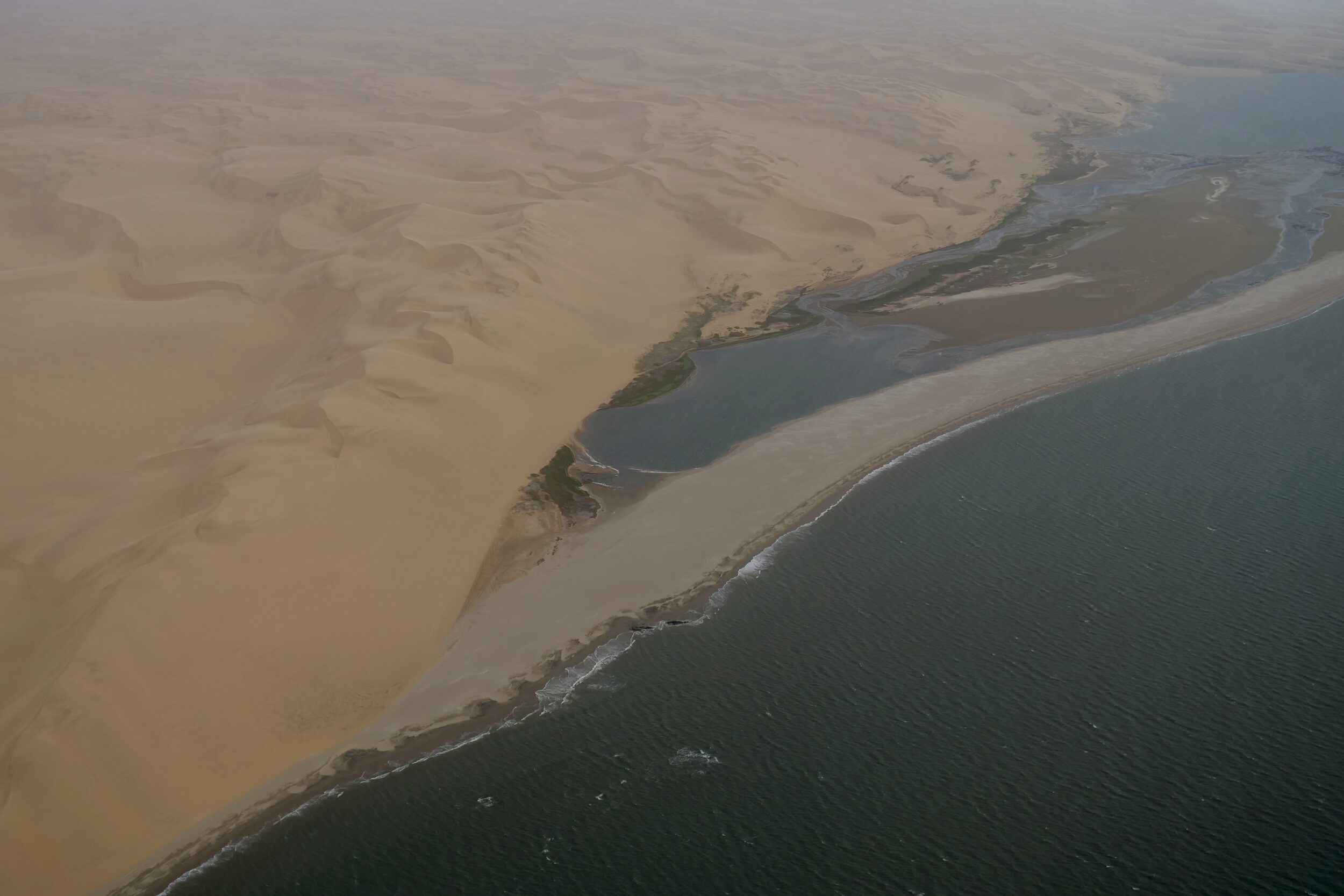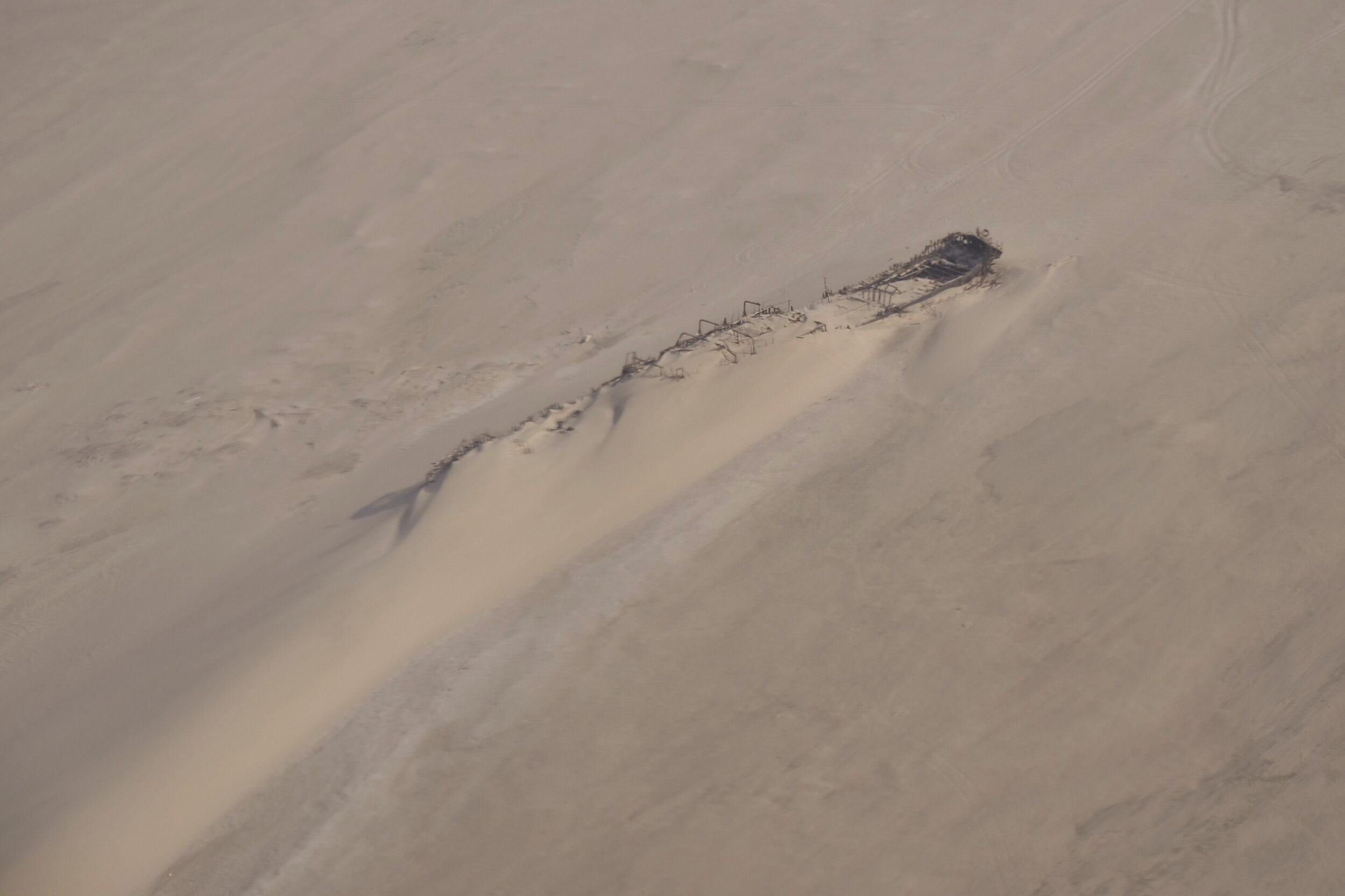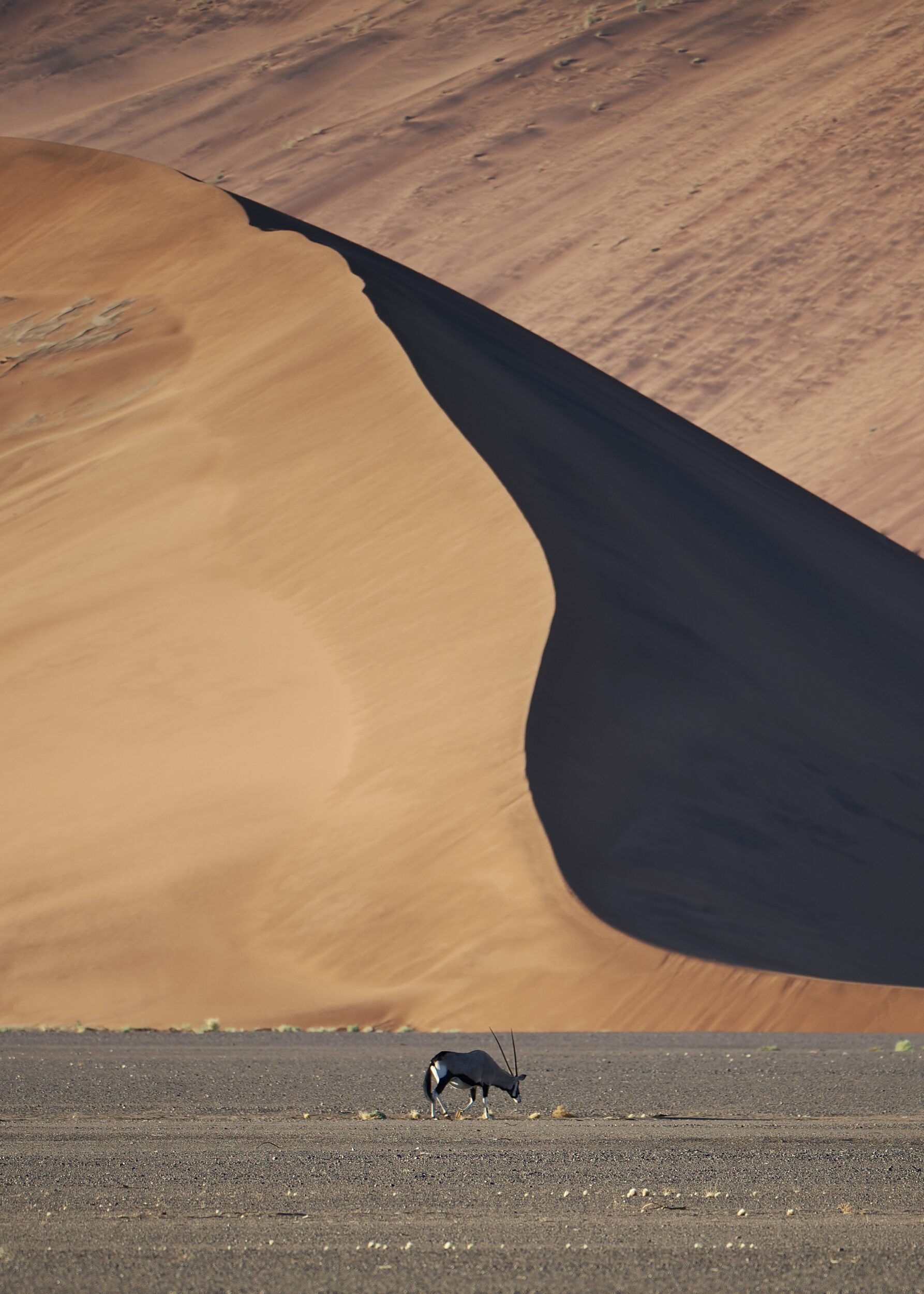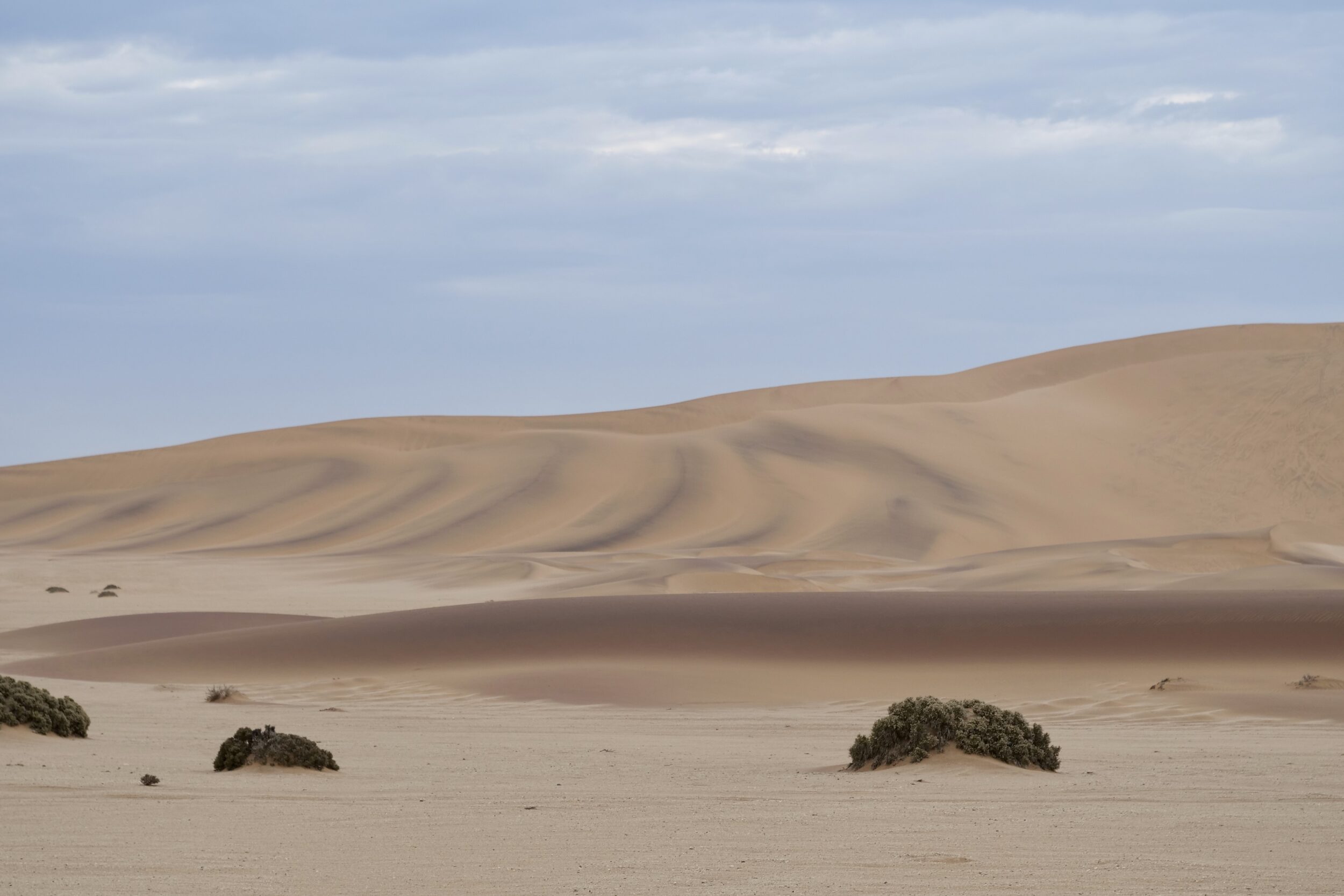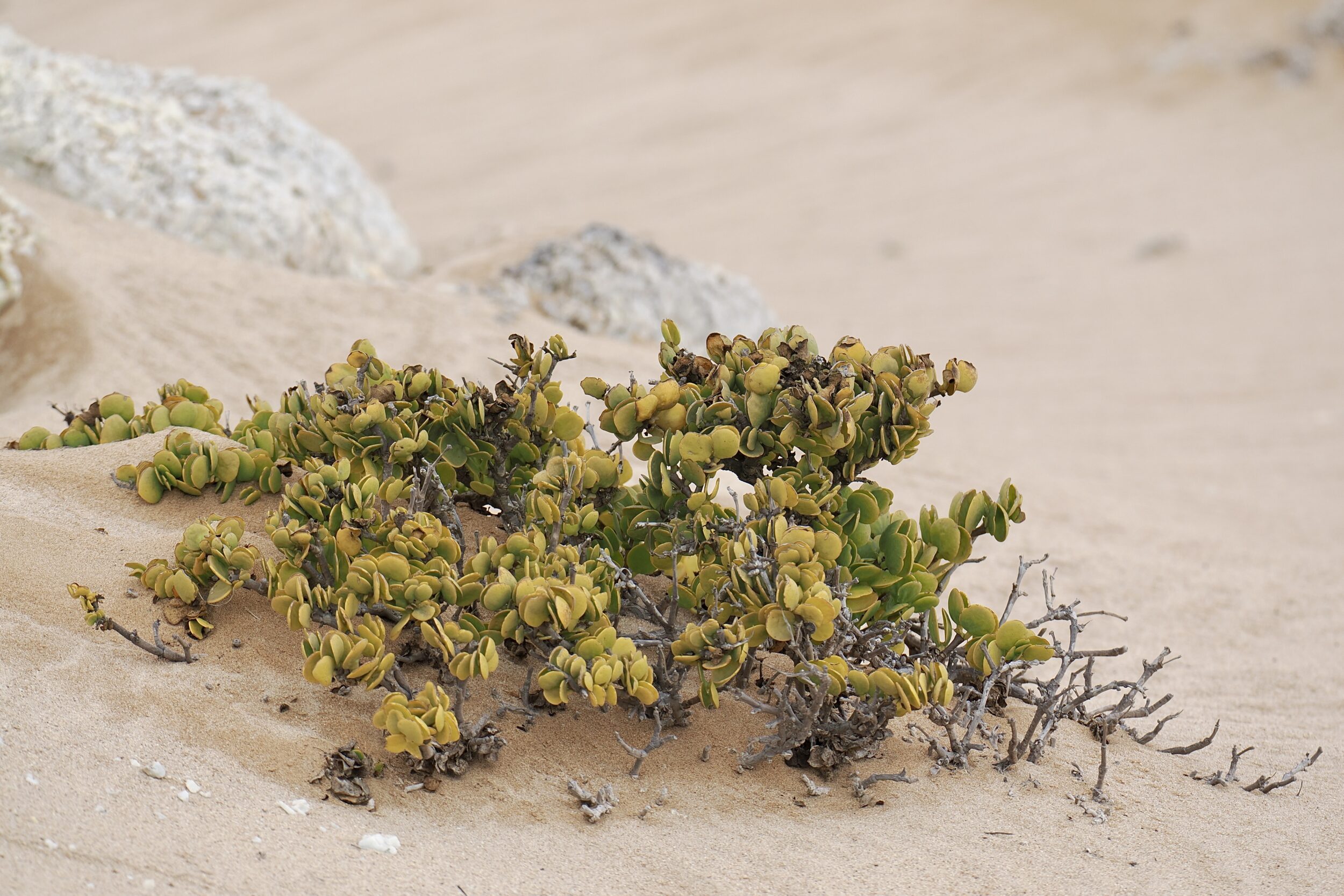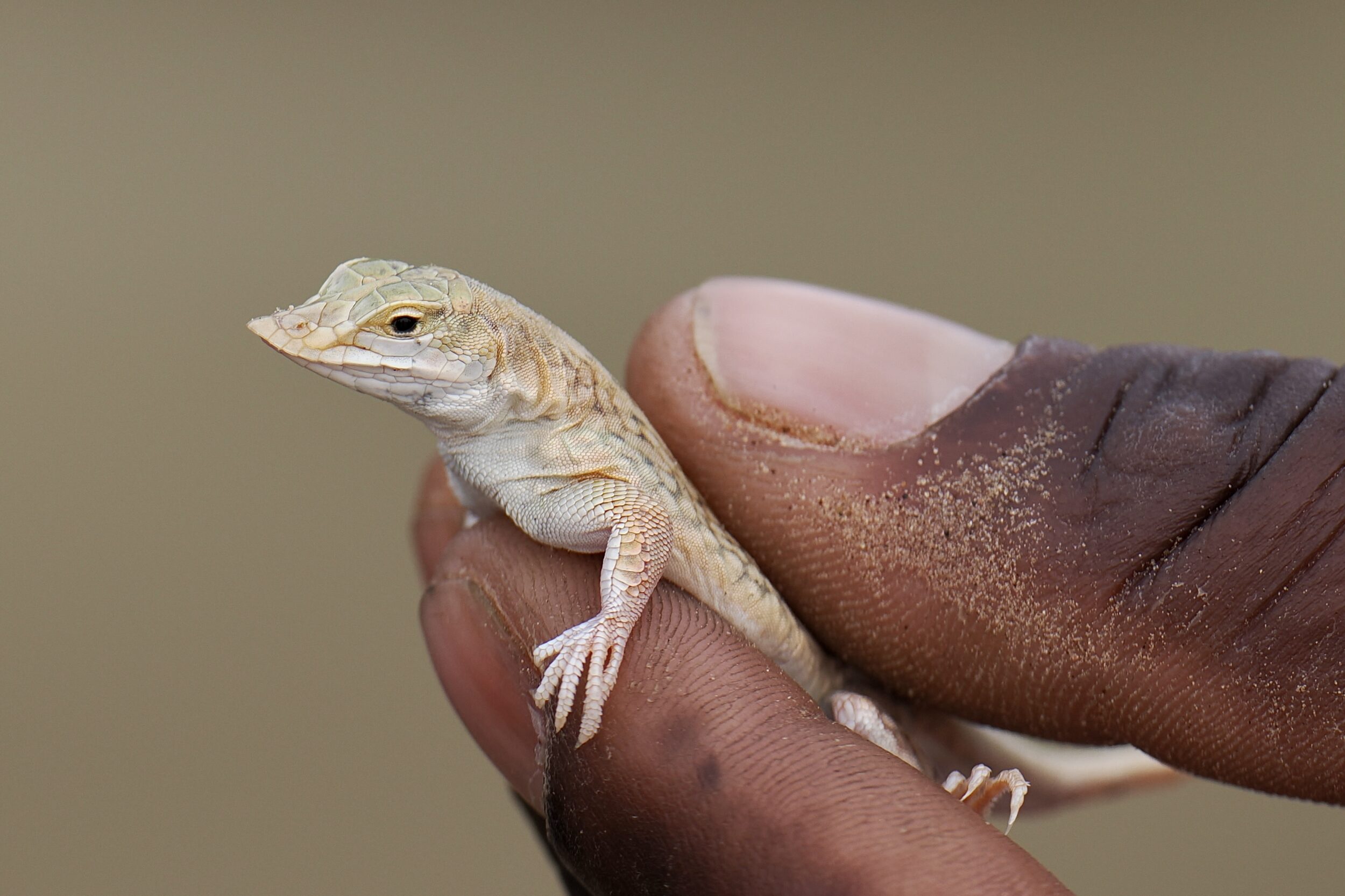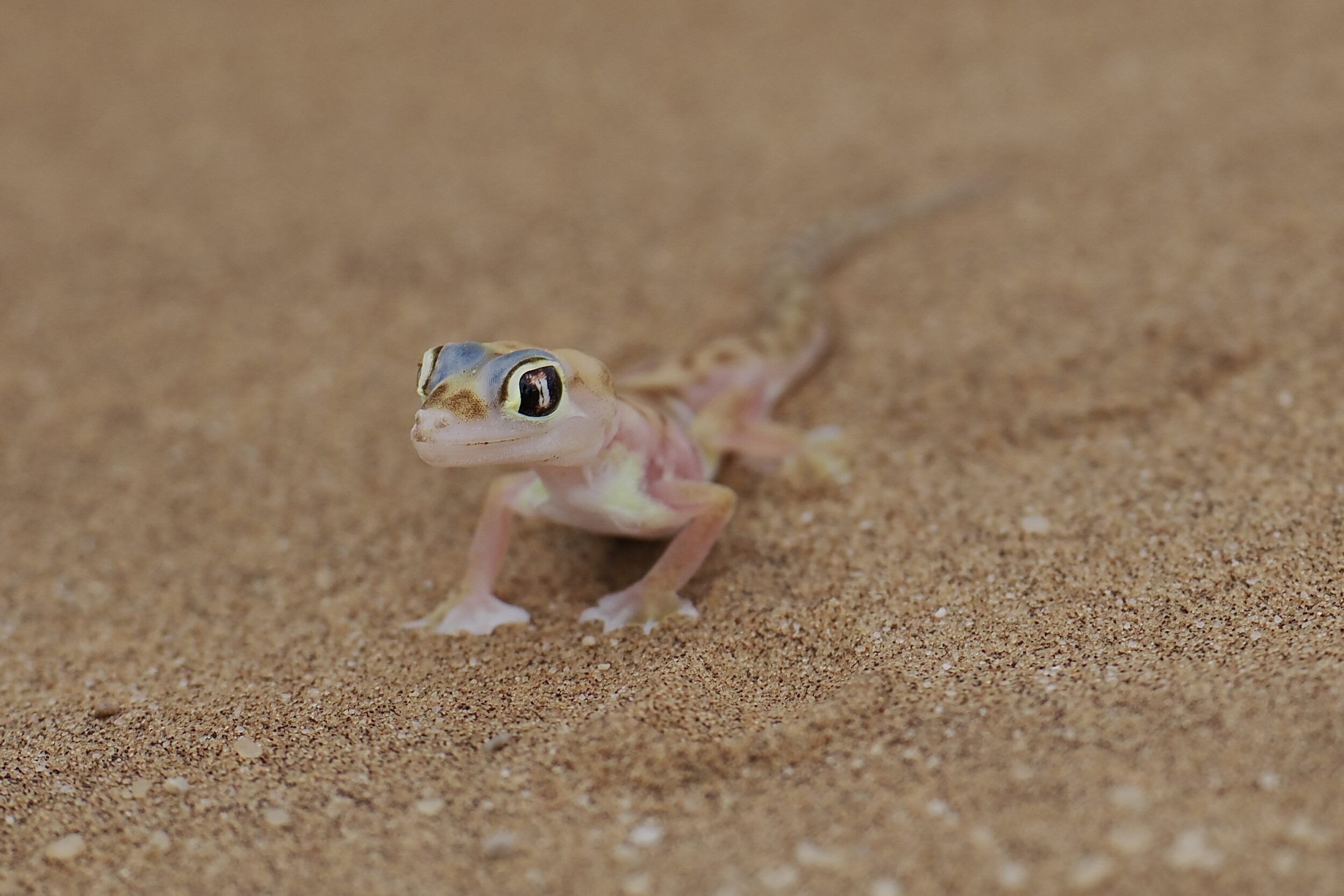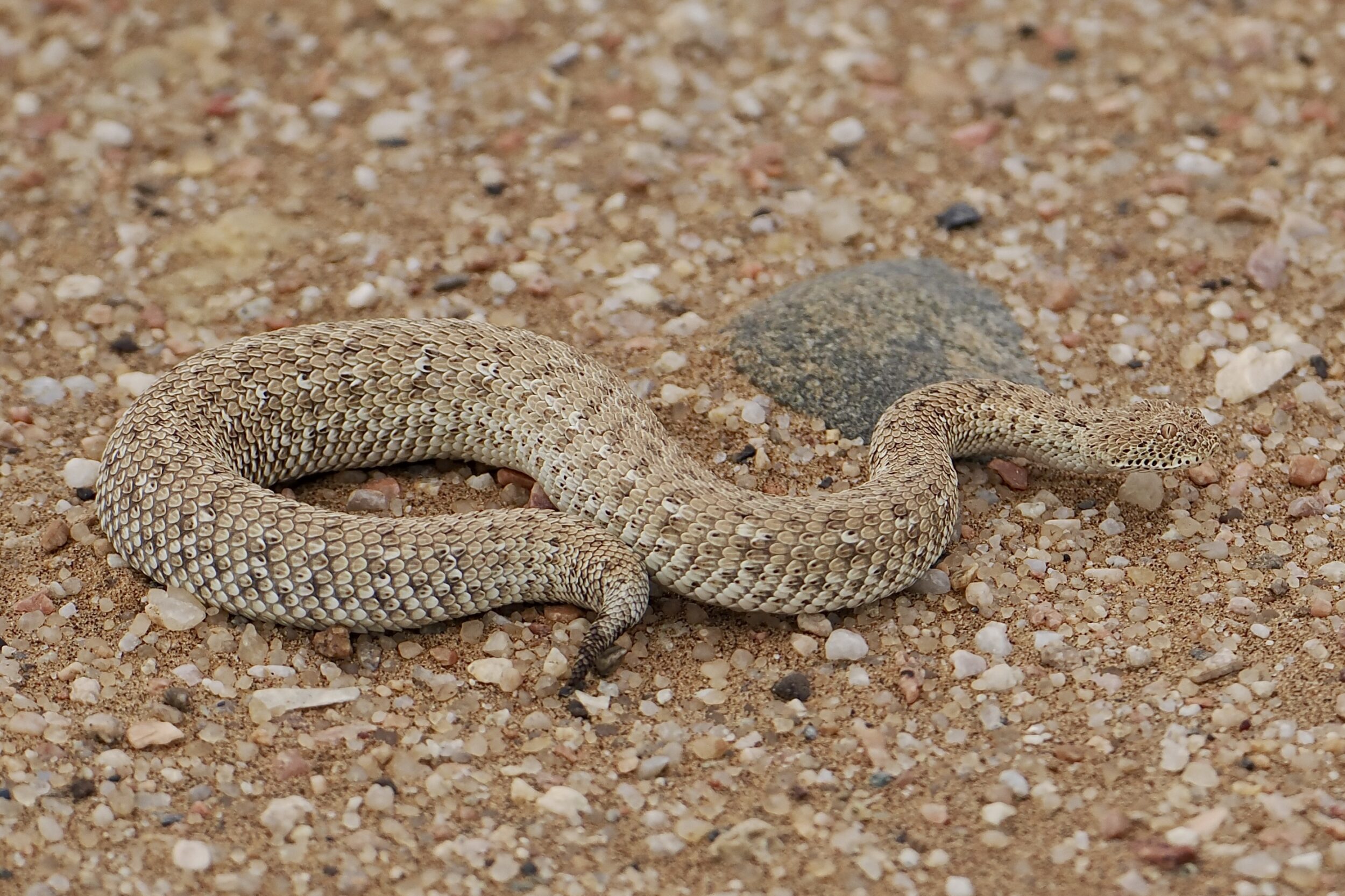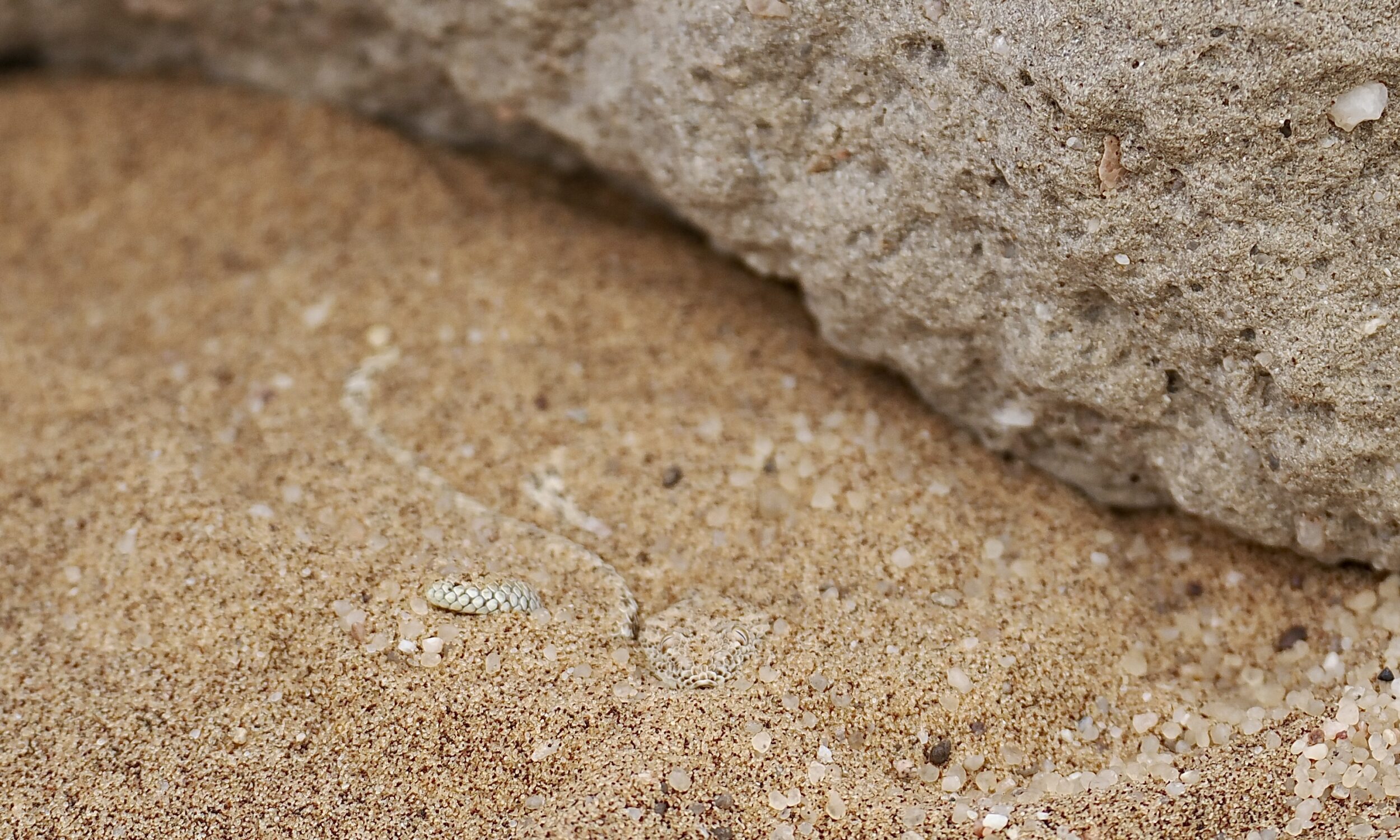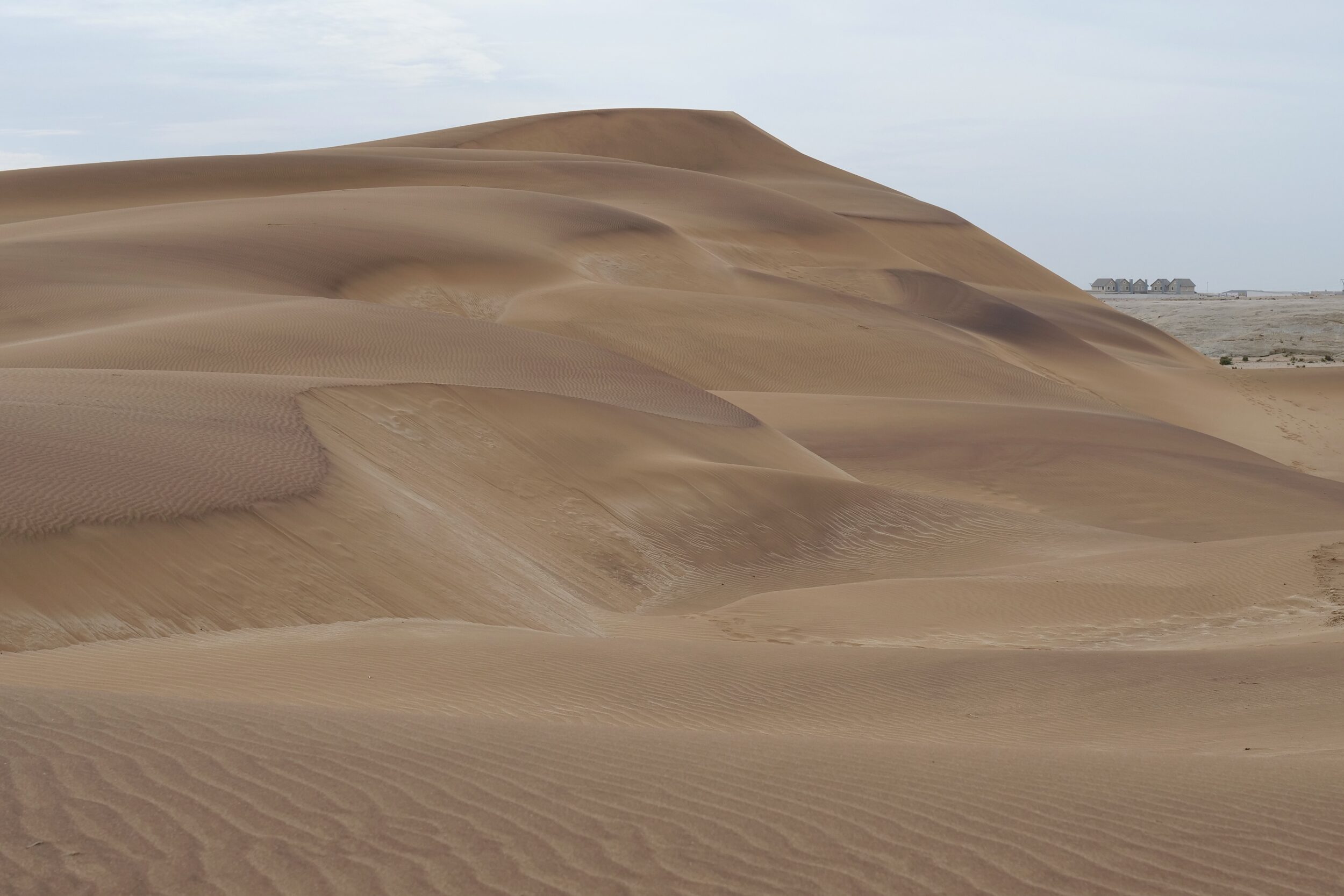Meroles anchietae – the shovel-snouted lizard – is endemic to the Namib Desert’s dunes.
Its signature behaviours – “dancing” atop the sand’s surface on a hot day, and diving into the cooler sand, below – are adaptations developed in order to survive an imminent, lethal threat.
As illustrated in #27 of this series, we were lucky enough to witness its astonishingly speedy sand-diving – a feat in which the key factor is its “shovel”.
Just inland from Swakopmund, and only a few kilometres from the Atlantic Ocean, the afternoon of 19 November 2022 was cool.
Accordingly, whilst our hero did deploy his “shovel” snout in order to escape predators/us, he did not need to dance!
